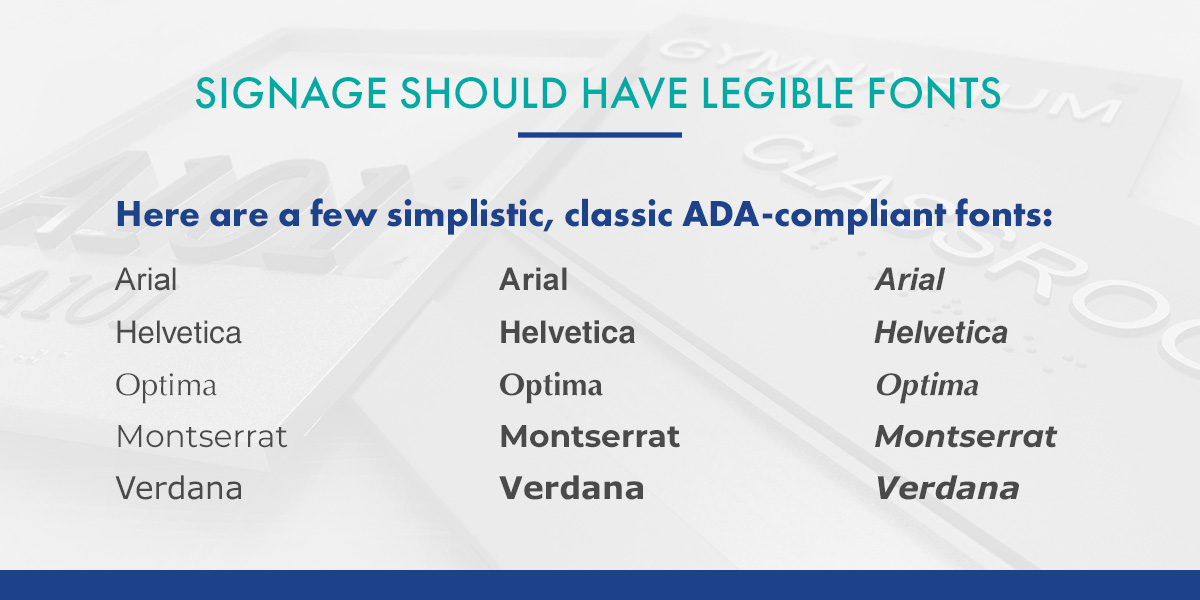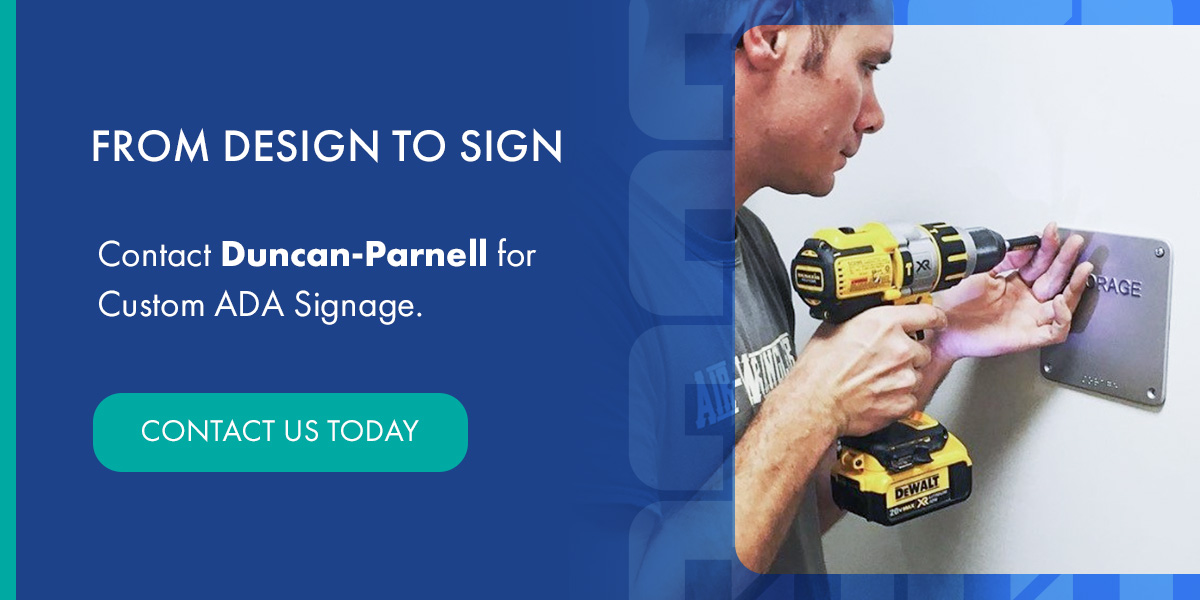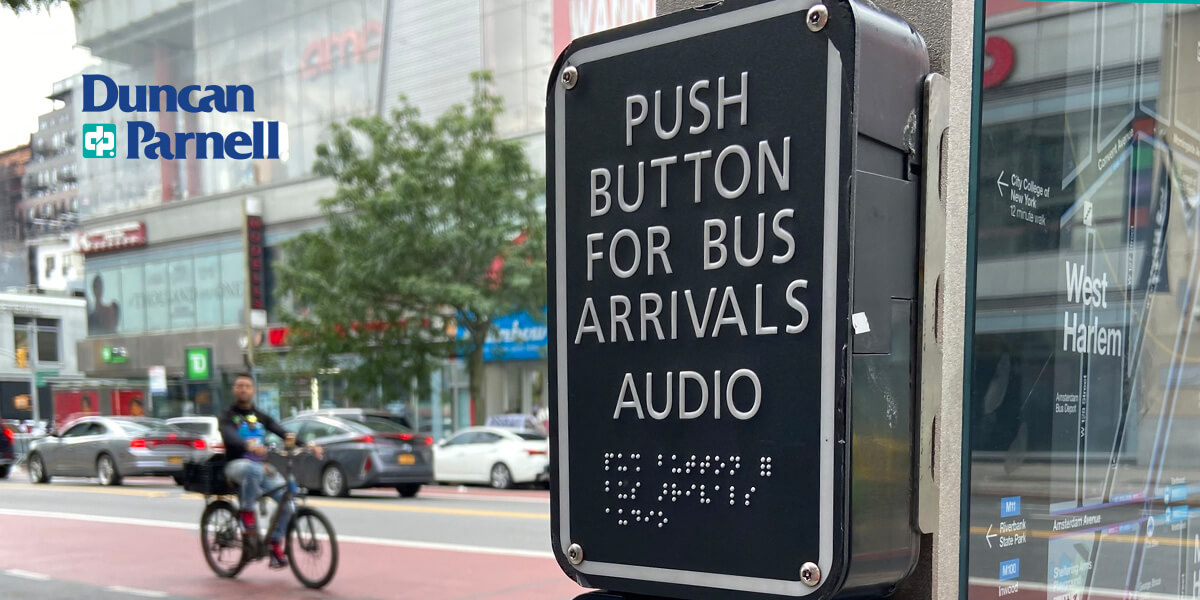6 Requirements for Your Signage to Meet ADA Compliance Standards
Congress passed the Americans with Disabilities Act in 1990 to protect people with disabilities. It provides equal opportunities and prevents disability-based discrimination across various aspects of life. These aspects range from education and employment to public transportation and health services. Facilities of all sizes and industries must also comply with the ADA requirements for signage.
These facilities include all places open to the public, like government buildings, hotels, and businesses. More examples are stores, office buildings, mixed-use complexes, and manufacturing plants.
If these facilities neglect ADA compliance for signage, it may invite unnecessary challenges for employees and customers with disabilities, leaving you liable to potential fines. But how do you know your signage abides by the ADA compliance requirements? This guide answers that question and more.
Why ADA-Compliant Signage Matters
ADA-compliant signage is crucial for various reasons, all focused on ensuring inclusivity, equal access and safety for people with disabilities. Here are a few reasons ADA-compliant signage matters.
- Legalities: Non-compliance with ADA guidelines — including signage — can result in fines, penalties, or legal action. These repercussions can cost your business significant amounts of money. ADA-compliant signage is essential to ensure companies do not discriminate against people with disabilities, protecting their civil rights.
- Inclusivity: Well-designed signs help people with visual impairments understand directions and warnings. They can navigate spaces, access information, and engage with services on an equal footing with everyone else.
- Customer Experience: Creating an accessible and inclusive environment makes people feel welcome, which can expand your customer base. Overall, ADA-compliant signage contributes to a positive experience for everyone — not just those with disabilities.
- Cost-Effectiveness: Making your facility's signage ADA-compliant from the start can save expenses related to redesigns and replacements. Of course, this also mitigates legal risks and costs.
- Ethical and Social Responsibility: Lastly, facilities with ADA-compliant signage align with moral principles. They promote inclusivity and fairness by accommodating people with diverse needs.
6 ADA Compliance Requirements for Signage
The Department of Justice established the 2010 ADA Standards for Accessible Design guide. This 275-page guide outlines the minimum requirements for facilities to be readily accessible to and usable by people with disabilities.
Chapters 2 and 7 provide detailed guidelines for ADA-compliant signage. Here is a summarized version of the six requirements for your signage to meet ADA compliance standards.
1. Glare and Reflections
Except for parking or traffic signage, signs must avoid glare or reflections. This specification benefits those with visual impairments. Highly reflective sign backgrounds and illustrations can be challenging to read — especially for people with light sensitivity.
Minimizing glare and reflections means people with visual challenges can easily interpret and comprehend the sign's content. It is an ADA requirement that creates a more accessible and inclusive environment.
2. High Contrast
Signage must have a 70% contrast ratio between the lettering and the background to create a clear differentiation. As such, the high level of dark-to-light contrast can help with readability, particularly benefiting those with low vision or visual impairments. The goal is to make reading signs easier for people with varying degrees of visual acuity.
3. Clear Typefaces
Of course, you will want to portray your brand in various elements within your facility. However, you must select specific fonts with adequate spacing between letters and exact size ratios.
Not all fonts shown are valid. “Fonts must be sans serif, and not italic, oblique, script, highly decorative, or otherwise unusual. If you’re not sure, upload your font to adafontcheck.xyz


Signage must have legible fonts like sans serif. To provide you with an idea, here are a few simplistic, classic ADA-compliant fonts:
- Arial
- Helvetica
- Optima
- Montserrat
- Verdana
4. Braille Usage
Signs identifying permanent locations must feature Grade 2 Braille, rounded Braille dots and raised characters for tactile reading. Using Braille on signage helps visually impaired people who rely on touch to understand information.
The guidelines specify that you should keep rounded Braille dots at least 3/8 of an inch separated from raised text. Here are a few other specifications regarding tactile signs' characters:
- Characters should be a minimum of 1/32 inch higher than the background.
- Use uppercase letters in sans serif without additional formatting such as italics or oblique.
- The characters must have a height between 5/8 inch and 2 inches — based on the height of the uppercase letter "I."
- The minimum character height is 5/8 inch for a viewing distance of less than 72 inches.
- Characters should be directly below their corresponding text.
5. Mounting Location
ADA-compliant signage requirements also stipulate signage placement and location. These guidelines vary based on the door type, swing and accessibility needs. Take the following, for example.
- Single doors: Signs should be on the door's latch side.
- Double doors with two active leaves: Signs must be on the right of the right-hand door.
- Double doors with one active leaf: Signs should be on the inactive leaf.
Thoughtful signage placements ensure they are easily identifiable by people with visual challenges.
6. Mounting Height
Signage must also comply with mounting height requirements in conjunction with the mounting location. For instance, raised characters on signs should be between 48 and 60 inches from the floor.
Mounting height makes a difference by ensuring visibility and readability for diverse users — from wheelchair users to people of varying heights.
Additionally, overhead signs must have their bottom at 80 inches from the floor. Wall-mounted signs should extend 4 inches from the wall and be at least 27 inches off the ground, with a maximum height of 80 inches.
From Design to Sign — Contact Duncan-Parnell for Custom ADA Signage
With over 75 years of expertise, Duncan-Parnell specializes in ADA-compliant signage tailored to your brand. Our team creates custom ADA signage, including Braille signs, wayfinding markers, hazard alerts, safety signage, and more. We understand the legal requirements while helping you reinforce brand recognition.
Our professionals prioritize your brand's integrity from design to installation, delivering impactful, compliance-driven signage.
Contact us today to create brand-aligned ADA signage — successful projects start here.




